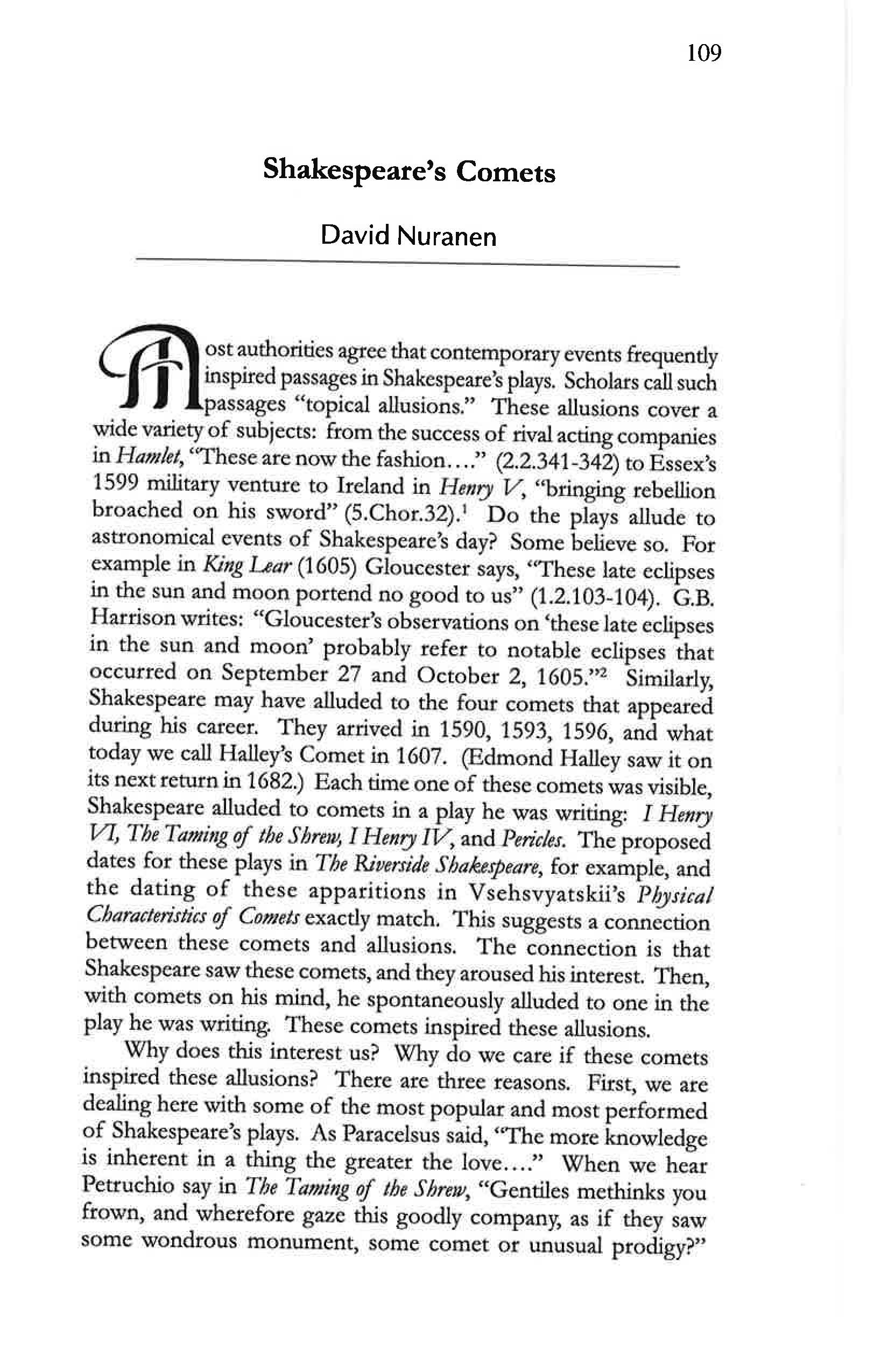Shakespeare's Comets
Main Article Content
Abstract
Most authorities agree that contemporary events frequently inspired passages in Shakespeare’s plays. Scholars call such passages “topical allusions.” These allusions cover a wide variety of subjects: from the success of rival acting companies in Hamlet, “These are now the fashion….” (2.2.341-342) to Essex’s 1599 military venture to Ireland in Henry V, “bringing rebellion broached on his sword” (5.Chor.3.2).1 Do the plays allude to astronomical events of Shakespeare’s day? Some believe so. For example in King Lear (1605) Gloucester says, “These late eclipses in the sun and moon portend no good to us” (1.2.103-104). G.B. Harrison writes: “Gloucester’s observations on ‘these late eclipses in the sun and moon’ probably refer to notable eclipses that occurred on September 27 and October 2, 1605.”2 Similarly, Shakespeare may have alluded to the four comets that appeared during his career. They arrived in 1590, 1593, 1596, and what today we call Halley’s Comet in 1607. (Edmond Halley saw it on its next return in 1682.) Each time one of these comets was visible, Shakespeare alluded to comets in a play he was writing: I Henry VI, The Taming of the Shrew, I Henry IV, and Pericles. The proposed dates for these plays in The Riverside Shakespeare, for example, and the dating of these apparitions in Vsehsvyatskii’s Physical Characteristics of Comets exactly match. This suggests a connection between these comets and allusions. The connection is that Shakespeare saw these comets, and they aroused his interest. Then, with comets on his mind, he spontaneously alluded to one in the play he was writing. These comets inspired these allusions.
